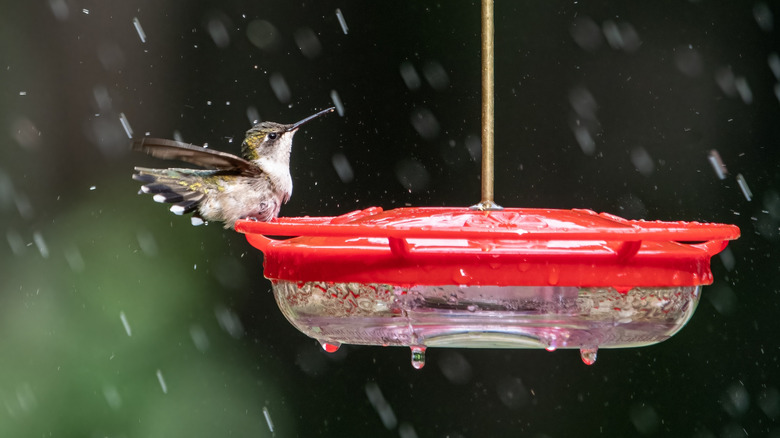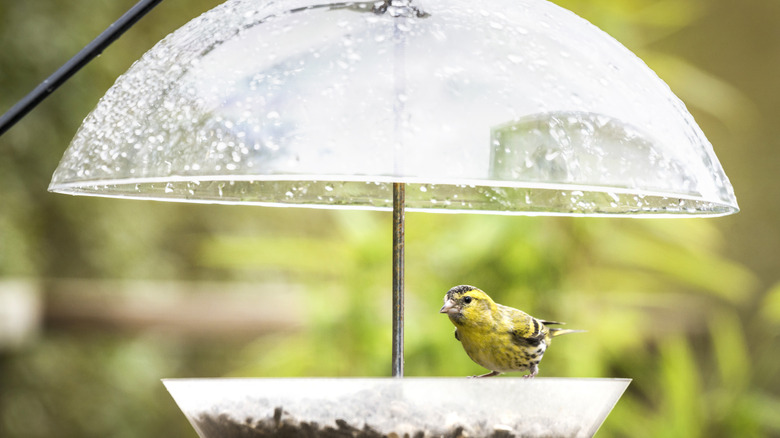Is It Okay To Leave Bird Feeders Outside When It Rains?
We may receive a commission on purchases made from links.
Birds can seek shelter when it rains if they need to, but what should you do with the bird feeder in your yard? Whether you can safely leave it outside in the rain or not depends on the style of the feeder and the type of bird food in it. If your feeder contains seeds that are likely to get rained on, move it to a sheltered spot — otherwise, you'll have to throw the wet seeds away afterward.
There are several downsides to leaving some feeders in the rain. First, wet birdseed can clump together, making it stick to the sides and be less accessible to birds. More importantly, it can harm the birds' health. It may develop mold, and moisture also increases the risk of parasites spreading, particularly if the weather is warm. Wet seeds can even sprout eventually. Seeds with the hulls removed are more likely to develop mold when wet, and any seed mixes high in organic matter (like wheat or peas) retain more moisture. On the other hand, suet can get wet without issue because it consists primarily of beef fat, which doesn't absorb moisture. Nuts, fruits, and mealworms are also less likely to stay moist or spoil.
Similarly, not all bird feeders are equally vulnerable to rain. If yours has a roof and few openings, for example, the food inside may not even get wet. But if you have a tray out in the open, that's a different story. If you get a lot of rainfall, switching to a less susceptible type of bird food or feeders may be most practical. Otherwise, here's how to keep your bird feeder safe during storms.
Where to put your bird feeder when it rains
If rain is predicted, bring your bird feeder inside or to a sheltered area, like under a tree or an awning. (You can move it back to its normal spot once the coast is clear.) Avoid making one of the most common mistakes people make with bird feeders: overfilling the feeder. Instead, only provide one day's worth of seed at a time and change it out for fresh seed daily, particularly when rain is on the forecast. This ensures that you save time and money if the seed gets wet and must be discarded, and allows your local birds to have a consistent supply of safe, dry seed.
When you refill the feeder, make sure to dry out the inside if it has gotten wet. In rainy, humid climates, it's best to wash and disinfect the feeder weekly with dish soap and a bleach solution. Dilute 1 part bleach to 10 parts water. To protect your bird seed further, consider adding Feeder Fresh, a sand-based product that absorbs moisture and is safe for birds to eat.
You can also make modifications to your bird feeder setup to keep rain out. A rain guard or squirrel baffle on top will serve as a mini umbrella for the feeder. Adding or widening drainage holes can help any water that gets in dry out more quickly. Lastly, moving the feeder to a more sheltered location permanently is an option to consider.

